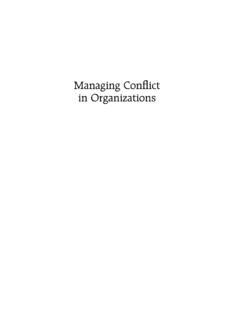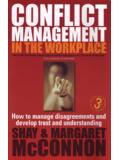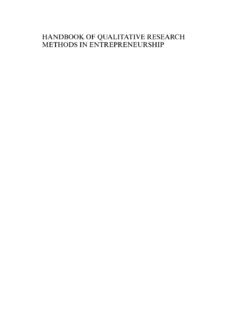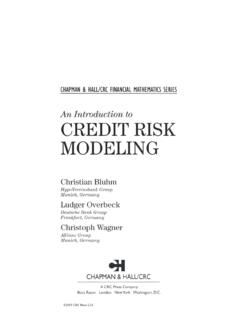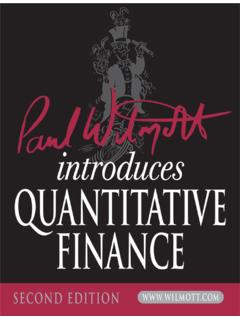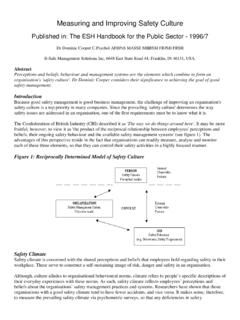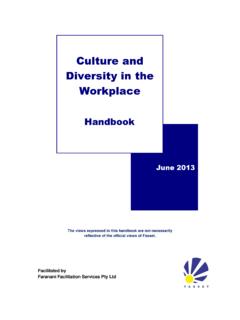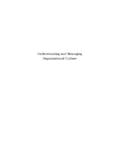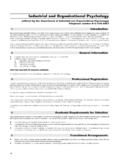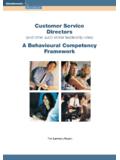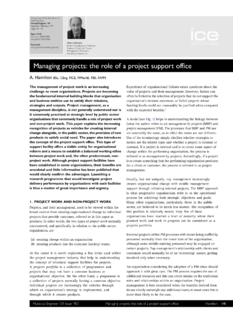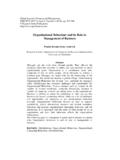Transcription of Organizational Culture and Leadership - UNTAG
1 OrganizationalCulture andLeadershipThird 6/14/04 9:25 AM Page 6/14/04 9:25 AM Page 6/14/04 9:25 AM Page 6/14/04 9:25 AM Page iiOrganizational Cultureand 6/14/04 9:25 AM Page iiiEdgar H. 6/14/04 9:25 AM Page ivOrganizationalCulture andLeadershipThird 6/14/04 9:25 AM Page vCopyright 2004 by John Wiley & Sons, Inc. All rights by Jossey-BassA Wiley Imprint989 Market Street, San Francisco, CA part of this publication may be reproduced, stored in a retrieval system, or transmitted in any form or by any means, electronic, mechanical, photocopying, recording, scanning, or otherwise, except as permitted under Section 107 or 108 of the 1976 United StatesCopyright Act, without either the prior written permission of the Publisher.
2 Or authorizationthrough payment of the appropriate per-copy fee to the Copyright Clearance Center, Inc.,222 Rosewood Drive, Danvers, MA 01923, 978-750-8400, fax 978-750-4470, or on the web at Requests to the Publisher for permission should be addressed to thePermissions Department, John Wiley & Sons, Inc., 111 River Street, Hoboken, NJ 07030,201-748-6011, fax 201-748-6008, e-mail: books and products are available through most bookstores. To contact Jossey-Bassdirectly call our Customer Care Department within the at 800-956-7739, outside at 317-572-3986 or fax also publishes its books in a variety of electronic formats.
3 Some content thatappears in print may not be available in electronic of Congress Cataloging-in-Publication DataSchein, Edgar Culture and Leadership / Edgar H. Schein. 3rd cm. (The Jossey-Bass business & management series)Includes bibliographical references and 0-7879-6845-5 (alk. paper)1. Corporate Culture . 2. Culture . 3. Leadership . I. Title. II. Series. '5 dc222004002764 Printed in the United States of AmericaTHIRD EDITIONHB 6/14/04 9:25 AM Page viThe Jossey-BassBusiness & Management 6/14/04 9:25 AM Page 6/14/04 9:25 AM Page viiiContentsPrefacexiThe AuthorxvPart One: Organizational Culture and Leadership Defined11.
4 The Concept of Organizational Culture : Why Bother?32. The Levels of Culture253. Cultures in Organizations: Two Case Examples394. How Culture Emerges in New Groups63 Part Two: The Dimensions of Culture855. Assumptions About External Adaptation Issues876. Assumptions About Managing Internal Integration1117. Deeper Cultural Assumptions About Reality and Truth1378. Assumptions About the Nature of Time and Space1519. Assumptions About Human Nature, Activity, and Relationships17110. Cultural Typologies18911.
5 Deciphering 6/14/04 9:26 AM Page ixPart Three: The Leadership Role in Culture Building, Embedding, and Evolving22312. How Leaders Begin Culture Creation22513. How Leaders Embed and Transmit Culture24514. The Changing Role of Leadership in Organizational Midlife 27315. What Leaders Need to Know About How Culture Changes29116. A Conceptual Model for Managed Culture Change31917. Assessing Cultural Dimensions: A Ten-Step Intervention33718. A Case of Organizational (Cultural?) Change36519.
6 The Learning Culture and the Learning 6/14/04 9:26 AM Page xPrefaceOrganizational Culture has come of age. Not only did the concepthave staying power but it is even being broadened to occupationalcultures and community cultures. Culture at the national level ismore important than ever in helping us to understand intergroupconflict. As it turns out, Culture is essential to understanding inter-group conflict at the Organizational level as well. My years of con-sulting experience with Digital Equipment Corporation (DEC)provided useful case material (as the Action Company) in my pre-vious editions, but it was only through my attempt to fully under-stand why DEC initially succeeded and, in the end, failed as abusiness that I came to realize the true importance of organiza-tional Culture as an explanatory in organi-zations is fairly easy to observe.
7 For example, Leadership failures,marketing myopia, arrogance based on past success, and so on; butin the effort to understand whysuch things happen, Culture as aconcept comes into its own (Schein, 2003).In an age in which Leadership is touted over and over again as acritical variable in defining the success or failure of organizations, itbecomes all the more important to look at the other side of the lead-ership coin how leaders create Culture and how Culture defines andcreates leaders. The first and second editions of this book attemptedto show this connection, and I hope that I have been able tostrengthen the connection even more in this third conceptual models of how to think about the structure andfunctioning of Organizational Culture , and the role that leadershipplays in the creation and management of Culture have 6/14/04 9:25 AM Page ximore or less the same in this third edition.
8 However, I have beenable to add material based on more recent clinical research and tomake the concepts more vivid by identifying more of the organiza-tions with whom I have worked over the of the chapters have been redone and edited. Some havebeen shortened; more have been lengthened with additional casematerial that I was able to incorporate. In addition, I have selec-tively incorporated relevant material from a great many other booksand papers that have been written about Organizational culturesince the last edition.
9 It is clear that there are still different modelsavailable to scholars and practitioners on how to think about cul-ture. I have not reviewed all of them in detail but have tried toshow, wherever possible, variations in point of view. I apologize tothose colleagues whose work I may have overlooked or chosen notto include, but my purpose is not to write the definitive textbook onculture; rather, it is to explore a way of thinking about Culture thatI believe best suits our efforts to understand groups, organizations,and edition is organized into three parts.
10 Part One focuses onorganizational and occupational cultures how to think aboutthem, how to define them, and how to analyze them. Leadershipis referred to throughout and Leadership issues are highlighted,but the focus is clearly on getting a better feel for what Culture isand Two focuses on the content of Culture . In a sense, culturecovers all of a given group s life; hence the content is, in principle,endless and vast. Yet we need categories for analysis, and here wecan draw on anthropology and group dynamics to develop a set ofdimensions that are most likely to be useful in making some con-ceptual sense of the cultural landscape as applied to Part Three the focus shifts to the leader as founder, manager,and, ultimately, a victim of Culture if the leader does not understandhow to manage Culture .
